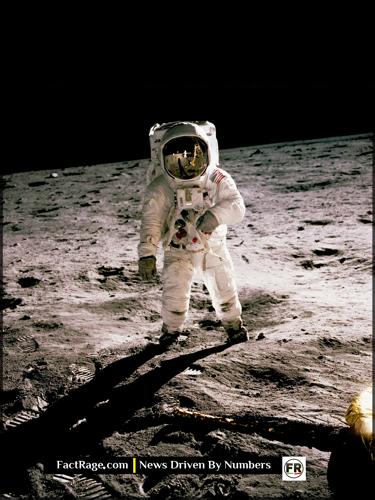CAPE CANAVERAL, FL – In a slow but monumental journey, NASA’s Space Launch System (SLS) rocket, poised for the historic Artemis III mission, is scheduled to begin its 4.2-mile trip from the Vehicle Assembly Building to Launch Pad 39B on July 15.
- A Mission of Firsts – Artemis III is slated to be the first mission to land humans on the Moon since 1972, and will include the first woman and first person of color to walk on the lunar surface.
- More Than a Move – The rollout, conducted by the crawler-transporter at speeds under 1 mph, is a critical systems test, verifying the stability and integration of the fully stacked rocket, Orion spacecraft, and mobile launcher.
- From Flyby to Footprints – Unlike the Artemis II mission which was a crewed lunar flyby, Artemis III is a landing mission targeting the Moon’s south pole to prospect for water ice and conduct new scientific research.
This deliberate procession marks a pivotal transition from assembly to launch preparations, representing a tangible step toward placing human footprints back on the lunar surface. The engineering and scientific significance of this rollout extends far beyond the logistics of moving the 322-foot-tall vehicle.
More Than a Move: Engineering Our Next Frontier
![]() The spectacle of a 32-story rocket inching its way to a launch pad captures the imagination, but the real story is in the science happening at less than one mile per hour. This careful journey is a critical test, validating the very systems designed to carry humanity back to the Moon and establish a new foothold in the cosmos. It’s a powerful reminder that our greatest technological leaps are often built upon the most deliberate, measured steps.
The spectacle of a 32-story rocket inching its way to a launch pad captures the imagination, but the real story is in the science happening at less than one mile per hour. This careful journey is a critical test, validating the very systems designed to carry humanity back to the Moon and establish a new foothold in the cosmos. It’s a powerful reminder that our greatest technological leaps are often built upon the most deliberate, measured steps.
What’s at Stake in the 4.2-Mile Journey to the Pad?

The trip from the Vehicle Assembly Building (VAB) to Launch Pad 39B is less about speed and more about precision. The crawler-transporter, a marvel of engineering in its own right, carries the combined weight of the SLS rocket, the Orion spacecraft, and the mobile launcher—a total of more than 21 million pounds. During this eight-to-twelve-hour journey, engineers will closely monitor how the integrated stack handles the stress and vibrations of the move.
This process serves as a final, real-world validation of the vehicle’s structural integrity before it is loaded with super-cooled propellants. Key data on load distribution, hardware stability, and system communications are collected, ensuring every component performs as designed. Any anomalies detected here are far easier to address than they would be in the final countdown. The prime contractor for the rocket’s massive core stage, Boeing, along with Northrop Grumman, which builds the solid rocket boosters, rely on this data to confirm their systems are ready for flight.
How Artemis III Differs From its Predecessor
While the Artemis II mission, which successfully sent a crew on a trip around the Moon in 2024, was a crucial test flight, Artemis III represents a fundamental shift in purpose. Artemis II confirmed the life-support systems and flight capabilities of the Orion spacecraft, built primarily by Lockheed Martin. Artemis III is the execution of the program’s ultimate goal: landing.
The hardware itself reflects this. The mission will utilize a human landing system (HLS), a separate spacecraft developed by commercial partners, to ferry two astronauts from lunar orbit down to the surface. The target is the Moon’s south polar region, an area scientists believe contains significant deposits of water ice in permanently shadowed craters. The presence of water is a game-changer for long-term lunar habitation, as it can be broken down into breathable air and rocket fuel. This distinguishes Artemis III as not just a return, but the foundation for a sustained human presence on the Moon.
The Science Riding on a Successful Launch
A successful rollout is the gateway to a mission packed with scientific objectives. Once on the surface, the Artemis III astronauts will conduct geological surveys, deploy scientific instruments, and collect samples from a region of the Moon never before explored by humans. Understanding the composition and history of the lunar south pole could unlock secrets about the formation of the solar system and the delivery of water to rocky planets like Earth.
The success of Artemis III will also validate the entire architecture NASA and its international partners have built for deep-space exploration. The SLS rocket, the most powerful ever built, is the backbone of this strategy, designed to send heavy payloads of crew and cargo far beyond Earth’s orbit. This rollout is more than just a pre-launch procedure; it is the physical embodiment of years of scientific and engineering work, setting the stage for a new chapter in human exploration.
Beyond the Footprints: Engineering a New Era on the Moon
![]() This slow crawl to the launch pad is more than just a logistical necessity; it represents the careful, deliberate steps of a new era in space exploration. Where the Apollo missions planted flags and left footprints, Artemis aims to build a foothold, using the Moon as a scientific proving ground for the technologies that could one day take us to Mars. The success of this rollout is not just about launching a single mission—it’s about setting the foundation for a future where humanity’s reach extends sustainably into the cosmos.
This slow crawl to the launch pad is more than just a logistical necessity; it represents the careful, deliberate steps of a new era in space exploration. Where the Apollo missions planted flags and left footprints, Artemis aims to build a foothold, using the Moon as a scientific proving ground for the technologies that could one day take us to Mars. The success of this rollout is not just about launching a single mission—it’s about setting the foundation for a future where humanity’s reach extends sustainably into the cosmos.










